
More than 85 percent of the world’s energy comes from combustion. However, increasing energy demands and stricter emission regulations are introducing new challenges to the optimization of combustion processes. The Flame Design team, which involves investigators in the LACER lab as well as the University of Maryland (Peter Sunderland) and…
Read more

Biomass is an attractive source of energy: It’s renewable and has low net greenhouse emissions, because biomass growth removes CO2 from the atmosphere. However, biomass, in its raw and processed states, generally contains a considerable amount of water. For example, the broth, in the production of bioethanol from corn, contains…
Read more
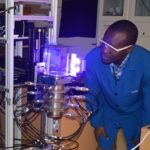
Fundamental experiments on the early stages of coal combustion are important for addressing environmental and human health concerns resulting from combustion-generated aerosols. More specifically, experimental studies of coal particle ignition under conditions relevant to practical pulverized coal burners are important to provide a greater understanding of key issues, such as…
Read more
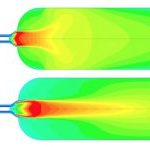
Combustion, which involves the interaction of many processes — including heat and mass transfer, chemical reaction and fluid dynamics — can be modeled with relatively high certainty using computational fluid dynamics (CFD). A properly validated CFD model can predict profiles of velocity, temperature and species concentrations, particle trajectories, pollutant formation, reaction…
Read more

In 2013, coal accounted for 29 percent of the world’s energy supply. This figure is unlikely to change substantially in the near future because coal is ubiquitous, abundant and reliable, making it a secure energy source. Unfortunately, the combustion of coal produces more carbon dioxide (CO2) per unit of energy…
Read more

The United States and several other countries are considering adopting hydrogen as a fuel carrier. Nonetheless, many challenges must be addressed before hydrogen can be used as a a transportation fuel, particularly the fire hazards that hydrogen presents if it leaks. Hydrogen has a number of unique properties that make…
Read more

When combustion occurs in normal gravity, the hot gases rise due to buoyancy and affect fluid flow and flame shape. When combustion occurs in microgravity, buoyancy effects are eliminated so there is greater control of the fluid flow. Without buoyancy, it is actually possible to achieve spherically symmetric flames and…
Read more

Temperature is among the most important measurements in reacting flow studies, as it contains information about chemistry, emissions and efficiency. And the thermocouple is the workhorse of temperature measurement, as they are inexpensive, robust and precise and can be used to measure a wide range of temperatures. Unfortunately, thermocouples also…
Read more

Pressurized oxy-combustion is a promising technology that can significantly reduce the energy penalty associated with first-generation oxy-combustion systems designed to capture CO2 in coal-fired power plants. However, higher pressure increases the production of strong acid gases — including sulfur trioxide (SO3) and nitrogen dioxide (NO2) — and aggravates the threat of…
Read more

With the rapid development of new combustion technologies, a deeper understanding of flames via advanced combustion diagnostics is required to meet society’s demand for combustion devices that operate with greater efficiency and less pollution. Laser-induced breakdown spectroscopy (LIBS) is an innovative approach to elemental analysis. We apply this technology in…
Read more

Energy storage is among the 21st century’s principal challenges. Developing state-of-the-art, low-cost materials for electricity storage would pave the way for widespread adoption of electric vehicles and renewable energy. Lithium-ion batteries are attractive for portable devices, electric and hybrid electric vehicles as well as for large renewable power facilities. Layer-structured…
Read more
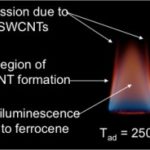
Single-walled carbon nanotubes (SWNTs) possess many unique electrical and mechanical properties. They can be conducting, semiconducting or insulating, based on their chirality. They also have a high surface area and a high strength-to-weight ratio. These properties make SWNTs desirable for many applications, including nano-electronic devices and composite materials. However, applications such…
Read more

Gas-phase combustion synthesis (GCS) has become the industry standard for the production of high-volume powders like silicon dioxide, titanium dioxide and carbon black, but until recently could not produce nonagglomerated, non-oxide materials. Despite past limitations, LACER has demonstrated and commercialized a GCS process to produce ultrafine, nonagglomerated, non-oxide ceramic, metal…
Read more

In 2016, petroleum products supplied 37 percent of America’s total primary energy consumption. Out of that, 71 percent was used for transportation and 23 percent went to industrial applications, with the rest used for residential and electric power applications. In the transportation sector, the vast majority of energy is supplied…
Read more
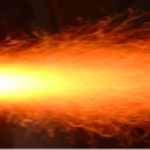
Biomass cofiring with coal, when combined with carbon capture and sequestration (CCS), can remove atmospheric carbon dioxide (CO2) because the CO2 consumed during biomass growth is not released back into the atmosphere after combustion. Cofiring biomass with coal can also contribute to compliance with renewable portfolio standards (RPS) and the…
Read more

Energy resources for rural electrification are variable and widely dispersed, so a solution for one region might not be appropriate for another. That’s particularly true when it comes to the electrical needs of rural areas in developing countries. These communities often are either isolated from the grid or pursuing electricity…
Read more
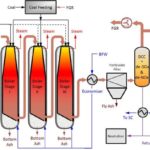
Fossil fuels supply over 80 percent of the world’s primary energy and more than two-thirds of the world’s electricity. Of this, coal alone accounts for 40 percent of the global electricity supply. Though coal is well-distributed globally and provides stable and reliable energy on demand, it emits a large amount of…
Read more
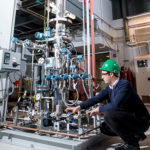
Learn what Washington University is doing to develop advanced technologies for Carbon Capture and Storage.
Read more
Investigators for NASA’s Advanced Combustion via Microgravity Experiments (ACME) are studying the properties of flames in a “weightless” environment
Read more
Guest: Richard Axelbaum, Professor of Energy, Environmental & Chemical Engineering, Washington University in St. Louis
Read more
McKelvey School of Engineering team refines critical components of new, near-zero-emission power plant
Read more
Scientists are using an experimental rig on board the International Space Station to understand how to produce soot-free flames on Earth.
Read more
Understanding how fire spreads and behaves in space is crucial for the safety of future astronauts and for understanding and controlling fire here on Earth.
Read more
In the five years since she left Washington University in St. Louis, Melissa Holtmeyer has applied the skills she acquired earning three degrees from the McKelvey School of Engineering not in a research lab or classroom, but in the halls of the U.S. government.
Read more
Learn what Washington University is doing to develop advanced technologies for Carbon Capture and Storage.

This is the first episode of Dean Aaron Bobick’s new podcast: Engineering the Future. What are both the near term and mid-term futures of energy around the globe and what technological discoveries and innovation are taking place to help determine that future?
Read more
LACER is involved in two experiments that will be conducted on board the International Space Station. An experiment designed by a Washington University researcher and his team is headed to space. Actually, the equipment is already there. But in the next few years, astronauts in the International Space Station will…
Read more